
Raising Bees on Your Homestead: A Beginner's Guide
Discover the joys of raising bees on your homestead. Learn essential tips for beekeeping, honey production, and sustainable pollination in this comprehensive beginner's guide.
PREPPING POSTS
Kathrine-Anne Hill
10/24/202412 min read


Affiliate Disclosure:
Please note that some of the links in this article are affiliate links. This means that if you click on these links and make a purchase, I may receive a small commission at no additional cost to you. This commission helps support the maintenance and growth of this website and allows me to continue providing valuable information and recommendations. Rest assured, I only recommend products and services that I have personally used or thoroughly researched. Your support is greatly appreciated! “As an Amazon Associate I earn from qualifying purchases.” For full disclosure see our Privacy Policy and Terms and Conditions here.
Raising Bees on Your Homestead: A Beginner's Guide
Are you ready to start a journey of sustainable living and enjoy backyard beekeeping? Keeping bees can be very rewarding. It gives you homemade honey, helps pollinate, and connects you with nature. But, where do you start?
In this guide, I'll show you how to raise bees on your homestead. We'll cover choosing the right spot for your hive to harvesting honey. This article is for those who want to make honey, help pollinate, or just enjoy beekeeping. It will give you the knowledge and confidence to start your beekeeping adventure.
Key Takeaways
Discover the joy and benefits of raising bees on your homestead, including honey production, pollination, and sustainable living.
Learn the essential steps to get started with beekeeping, from selecting the right location to choosing between nucs and package bees.
Explore the necessary beekeeping supplies and equipment needed to maintain a healthy beehive and maximize your honey yields.
Understand the importance of regular hive inspections, monitoring for swarming, and implementing best practices for successful beekeeping.
Gain insights into the common challenges and mistakes that new beekeepers may encounter, and how to overcome them.
Introduction to Beekeeping for Beginners
Starting your beekeeping journey can be very rewarding. It's important to have a good base of knowledge. There are many resources for beginners to learn this fascinating hobby or career.
Learning Resources for Aspiring Beekeepers
One great way to prepare is by taking a class or joining a beekeeping club. These groups offer hands-on learning, mentorship, and chances to meet experienced beekeepers. You can also find lots of helpful books, videos, and online resources. They cover topics like managing hives and harvesting honey.
The Benefits of Keeping Bees on Your Homestead
Enjoy a delicious honey harvest and the potential to sell or use it for various purposes.
Support the local ecosystem by providing crucial pollination services for nearby plants and crops.
Engage in a therapeutic and rewarding hobby that allows you to connect with nature.
Contribute to the preservation of honey bee populations, which are essential for a healthy environment.
Beekeeping requires time, money, and effort. But the rewards are amazing. By learning and understanding the benefits, you'll be ready for a successful beekeeping experience on your homestead.
Getting Started with Beekeeping
Starting your beekeeping journey is exciting and rewarding. But, it's important to begin correctly. Finding the perfect spot for your beehive is a key first step. This choice affects your bees' health and meets local rules, avoiding neighbor issues.
Determining the Right Location for Your Beehive
Choose a spot with lots of sun, near your property lines, and away from water. Bees love sunlight, so a sunny spot is best. Also, check local rules and respect your neighbors' space to keep good relations.
Choosing Between Nucs and Package Bees
Deciding between nucs and package bees is a big choice. Nucs give new beekeepers a head start. Package bees are cheaper. Think about what you want and what you can afford.
Choosing the right spot and deciding between nucs and package bees sets you up for success. Remember, happy bees need a good home and the right start.
Ordering and Installing Honey Bees
Starting as a beekeeper can feel overwhelming. But, with the right steps, you can welcome your colony smoothly. This is key for a thriving bee home on your land.
Ordering bees early is wise. Suppliers often sell out fast, especially in spring. I ordered a 3lb package from a local supplier early, aiming for a spring delivery.
My hive was set up and ready when my bees arrived. I followed the install guide for my Langstroth hive. After 5 days, I checked the hive to see if the queen was laying eggs. I'll check again in a week to confirm.
I've been using resources like Runamuk Acres, Homestead Lady, and Montana Homesteader to help. They've been invaluable in setting up my bees for success. I'm confident they'll thrive and help our ecosystem grow.
"Ordering bees in winter is advised as most places that sell bees will sell out."
Essential Beekeeping Supplies and Equipment
Starting your beekeeping journey means investing in the right tools. As a beginner, you need the basics to care for your bees. This includes the hive, protective gear, and more.
Choosing the right beehive is a big decision. The Langstroth hive is popular for its design and ease of use. But, it can be heavy, so be ready to lift it during inspections.
VEVOR Bee Hive 30 Frame Bee Hives Starter Kit can withstand harsh weather conditions, has ventilation ports reducing the growth of harmful substances and helps to maintain hive health.
The Beecastle 10-Frames Complete Beehive Kit, includes frames and beeswax coated foundation sheet and is highly rated.
You'll also need a beehive smoker to calm the bees. You can use different materials to make smoke. This smoke keeps the bees calm and cooperative.
A popular beehive smoker is the Honey Keeper Bee Hive Smoker Stainless Steel with Heat Shield is high quality and has a heat shield to keep your hands safe.
Hive tool: An essential tool for prying apart hive components and manipulating frames
Frame lifter/holder: Helps you safely handle and inspect the delicate frames
Bee brush: Used to gently sweep bees off frames during inspections
Beekeeping toolbox: Keeps your essential tools organized and accessible
Protective gear is crucial. Get a good beekeeping suit with a veil, gloves, and jacket. This keeps you safe from stings. Choose breathable materials, like cotton, for warm weather.
As you get more into beekeeping, you might need more tools. This includes honey extractors, bee feeders, and wax rendering supplies. The initial cost is high, but these tools will last for many years.
Knowing what beekeeping supplies you need is crucial for a strong hive. With the right tools and practice, you'll become a skilled beekeeper.
Maintaining a Healthy Beehive
Keeping your beehive in top shape is key for your honey bee colony's success. Regular checks and watching for swarming signs are vital for beehive maintenance. By paying close attention to your bees, you can keep them healthy and enjoy plenty of honey.
Conducting Regular Hive Inspections
As a beekeeper, regular hive checks are crucial. Look for a healthy queen, brood, and watch out for diseases or mites. Keeping mite levels low is essential for the hive's health.
Start inspecting your hive weekly when you're new, then move to every two weeks. Counting mites for 24 hours can show if you have an infestation. More than 10 mites per brood box means you need to act fast.
Monitoring for Signs of Swarming
Swarming is when part of the colony, including the queen, leaves to find a new home. It's a sign of a strong hive but can mean losing your colony. Watch for queen cells, fewer adult bees, and lots of drones.
By being alert and fixing problems quickly, you can keep your healthy beehive. Regular hive inspections and swarming prevention help your bees stay happy and productive.
Raising Bees on Your Homestead
Adding a backyard beehive to your homestead is rewarding and sustainable. Beekeeping gives you honey and helps your ecosystem's health.
Homestead beekeeping boosts sustainable pollination. Bees pollinate 98% of our food. A beehive on your homestead means a better harvest and less store-bought food.
Backyard beekeeping is also therapeutic. Watching bees can connect you to nature. It brings calm and mindfulness to your homesteading life.
Starting beekeeping is easy. You can buy a nuc hive for $100 to $350 or catch a swarm. With the right tools and a bit of knowledge, you can be a successful beekeeper.
"Bees do have a collective consciousness, and they do act in accordance to what is best for the hive."
- Marla Spivak, Entomologist
Harvesting Honey from Your Beehives
Beekeeping is a rewarding hobby that gives you delicious honey and helps bees in our ecosystem. As a beekeeper, harvesting honey is a highlight. It lets you enjoy the sweet results of your hard work.
Estimating Honey Yield
A healthy colony can produce about 50 pounds of honey yearly in a fertile area. But, honey production changes a lot from year to year and place to place. Bees don't make honey all year in most places. It might take until the second year for them to have extra honey.
Honey Extraction Methods
Choosing the right method to extract honey is important. Many use a smoker, but too much smoke can change the honey's taste. After extracting, the honey is left to settle for a few days before bottling.
In the U.S., most beekeepers use Langstroth hives, which can be heavy. It's best to keep hives away from bright lights, children, pets, pools, sidewalks, and busy areas.
Pests like varroa mite, small hive beetle, and wax moth can harm hives. Regular checks and care are key to a healthy colony.
The best time for honey flow is June and July. Honeycomb cells should be 90% capped for extraction. The best temperature for extraction is 75-80 degrees.
Raw honey from the honeycomb is full of nutrients and antioxidants. Beeswax is also useful for making products like chapstick, creams, lotions, soaps, and candles. These uses add to the joy of harvesting honey.
The VEVOR Electric Honey Extractor, lets you enjoy effortless and efficient honey extraction.
The TECHTONGDA Mesh Honey Press Machine Honey Extractor is a manual option which could be better suited on a homestead where you won't need electricity.
Beekeeping Best Practices
Starting your beekeeping journey means learning the best ways to care for your hive. It's important to build trust with your bees and understand their signals. This will help your hive thrive.
Building Trust with Your Bees
When you visit your beehive, be calm and respectful. This helps you and your bees get along well. Italian bees are friendly, while Russian bees are tough in winter. But Africanized honey bees are very aggressive, so be careful.
Wearing the right gear, like a bee suit and gloves, keeps you safe. A smoker, which uses smoke from green grass, helps calm the bees. This makes inspections easier.
Learning to Read Your Hive
Knowing how to read your bees' behavior is key. Watch for the queen, wax production, and the health of your colony. Also, check how much sugar water they use.
"Bees are one of the oldest creatures on Earth, surpassing the existence of apes walking upright."
By watching your hive closely, you can spot problems early. This lets you make smart choices for your colony. Every hive is different, so understanding your bees' needs is crucial for a successful beekeeping journey.
Common Beginner Beekeeping Mistakes
Starting beekeeping is exciting and rewarding, but it comes with challenges. As a beginner, knowing common mistakes is key. Mistakes like wrong hive placement and poor winter prep can harm your bees.
One big mistake is putting hives in the wrong spot. The right spot is important for bees and your safety. Think about sun, wind, and easy access to make sure your bees thrive.
Another mistake is not getting ready for winter. Bees need special care in cold weather. Make sure they have enough food, keep them warm, and control mites to keep them safe.
Not managing varroa mites is another big problem. These mites can destroy a colony if not handled. Check for mites often and take action to keep your bees healthy.
Improper hive placement
Inadequate winter preparation
Mismanagement of varroa mites
Knowing these mistakes and how to avoid them can help you succeed. With the right knowledge and care, you can enjoy the benefits of beekeeping.
"Beekeeping is a journey, not a destination. By being aware of these common pitfalls and taking proactive steps to avoid them, you can set your bees up for long-term success and enjoy the many rewards that come with raising honey bees on your homestead."
Conclusion
Raising bees on your homestead is rewarding and sustainable. It offers endless benefits like honey, beeswax, and propolis. Bees also play a key role in pollinating your gardens and ecosystems.
Whether you're new or experienced, beekeeping is a great opportunity. With the right knowledge and dedication, you can have a thriving hive. This will give you valuable products and help your local environment.
By caring for honey bees, you join a group of homesteaders protecting these pollinators. This ensures a brighter, more sustainable future. So, become a beekeeper and enjoy the benefits of beekeeping on your homestead and sustainable backyard beekeeping. The journey will be enlightening and delicious!
FAQ
What are the essential steps for beginner beekeepers to get started on their homestead?
First, choose the perfect spot for your beehive. Next, decide between nucs and package bees. Then, order and set up your bees. Finally, get all the necessary beekeeping gear. This guide will help you through these steps to start beekeeping on your homestead.
What are the main benefits of keeping bees on a homestead?
Keeping bees has many advantages. You get honey and help with pollination. It's also therapeutic and connects you more with nature. Plus, it boosts your homesteading self-sufficiency.
How do I decide between purchasing nucs or package bees for my new beehive?
Choosing between nucs and package bees depends on several factors. Nucs are more established but cost more. Package bees are cheaper but need more care. This guide helps you understand the differences to make the best choice for you.
What are the essential beekeeping supplies and equipment I need to get started?
You'll need hive boxes, frames, foundation, and protective gear like suits and veils. This section also talks about building your own hives to save money. It guides you through the construction process.
How do I maintain a healthy beehive and monitor for potential issues?
Keeping your hive healthy means regular checks. Look for a healthy queen, brood, and watch for disease or mites. This guide teaches you to "read" your hive and fix problems early for your colony's success.
What are some of the common mistakes that beginner beekeepers should avoid?
Avoid common mistakes like bad hive placement and poor winter prep. Also, don't mismanage varroa mites. This section helps you steer clear of these errors to ensure your beekeeping success.
Related Posts:
Transform Your Garden Into a Food Forest
Source Links
What You Need to Know About Keeping Bees - https://homesteadingfamily.com/keeping-bees/
How to Start a Bee Farm - Backyard Beekeeping - https://backyardbeekeeping.iamcountryside.com/beekeeping-101/how-to-start-a-honey-bee-farm/
A Beginner's Guide to Small Scale Beekeeping - https://www.naturesupplyco.com/blogs/news/a-beginners-guide-to-small-scale-beekeeping-guest-contributor?srsltid=AfmBOorzHoyxYchsSWBbnmOPtnswYGIVOfD2Tj_seNc9L0UK005tmsf-
Beekeeping for Beginners: Introduction to Successful Beekeeping - https://kowalskimountain.com/beekeeping-for-beginners/
How to Get Started with Beekeeping - https://homesteadhow-to.com/how-to-get-started-with-beekeeping/
Beekeeping for Beginners Keeping Backyard Bees - https://www.keepingbackyardbees.com/beekeeping-for-beginners/
How to start Beekeeping A Beginner's Guide to Being a Beekeeper - https://montanahomesteader.com/how-to-start-beekeeping-a-beginners-guide-to-being-a-beekeeper/
Beekeeping on the Homestead — Anne of All Trades - https://www.anneofalltrades.com/blog/2018/12/5/honey-harvest
How to Start Beekeeping - Natural Beginner Beekeeping - https://melissaknorris.com/podcast/how-to-start-beekeeping-natural-beginner-beekeeping/
Become a Beekeeper: 8 Steps to Getting Started with Honeybees • The Prairie Homestead - https://www.theprairiehomestead.com/2014/05/get-started-honeybees.html
Installing a New Beehive - https://homestead-honey.com/homestead-beekeeping-installing-new-hive/
Must Have Beekeeping Supplies Tools and Equipment for Beginner Beekeepers - https://montanahomesteader.com/must-have-beekeeping-supplies-tools-and-equipment-for-beginner-beekeepers/
Beekeeping Equipment to Get Started - https://beebuilt.com/pages/beekeeping-equipment
Must-Have Beekeeping Supplies (For the Beginner Beekeeper) - https://homesteadingfamily.com/must-have-beekeeping-supplies/
7 Tips for Keeping Happy and Healthy Bees - https://miller-mfg.com/blogs/blog/7-tips-for-keeping-happy-and-healthy-bees?srsltid=AfmBOop4tpPWRjDYarl1Assz53vVFae4Mqz16sUVzuloli7wMMg-zJqi
How to Care for Honey Bees - https://www.beekeepingmadesimple.com/blog/howtocareforbees
Beekeeping Basics: How to Raise Honeybees in Your Backyard - https://www.sunset.com/garden/backyard-projects/beekeeper
Raising Honeybees - Big Bear Homestead: Home - https://bigbearhomestead.com/beekeeping/
Should You Raise Honey Bees? - https://www.almanac.com/beekeeping-101-why-raise-honeybees
How to Harvest Honey: Collect Honey From Your Hives! - https://www.almanac.com/beekeeping-101-collecting-honey
How to Start Beekeeping. A Step by Step Guide. - https://www.beekeepingmadesimple.com/blog/how-to-start-beekeeping
How to Harvest Honey From Your Beehive | IFA's Helping to Grow Blog - https://grow.ifa.coop/beekeeping/how-to-harvest-honey-from-your-beehive
How to Start a Beehive - Beekeeping 101 - Molly Green - https://mollygreen.com/blog/beekeeping-101-how-to-start-a-hive/
How To Set Up Your First Beehive - Runamuk Acres Farm & Apiary - https://runamukacres.com/how-to-set-up-your-first-beehive/
Integrating Beekeeping with Permaculture - The Permaculture Research Institute - https://www.permaculturenews.org/2017/01/18/integrating-beekeeping-permaculture/
Beginner Beekeeping: 4 Things You Should Know About Honey Farming - https://thriftyhomesteader.com/beekeeping-for-beginners/
Why New Beekeepers Should Start With Two Hives Keeping Backyard Bees - https://www.keepingbackyardbees.com/why-new-beekeepers-should-start-with-two-hives-zbwz1806zsau/
Why Every Homestead Should Have Bees - https://www.beekeepingmadesimple.com/blog/homestead-beekeeping
A good conclusion to the honey harvest - https://www.bangordailynews.com/2018/09/30/living/a-good-conclusion-to-the-honey-harvest/
To Bee or Not to Bee — The Brown Homestead - https://thebrownhomestead.ca/journal/to-bee-or-not-to-bee

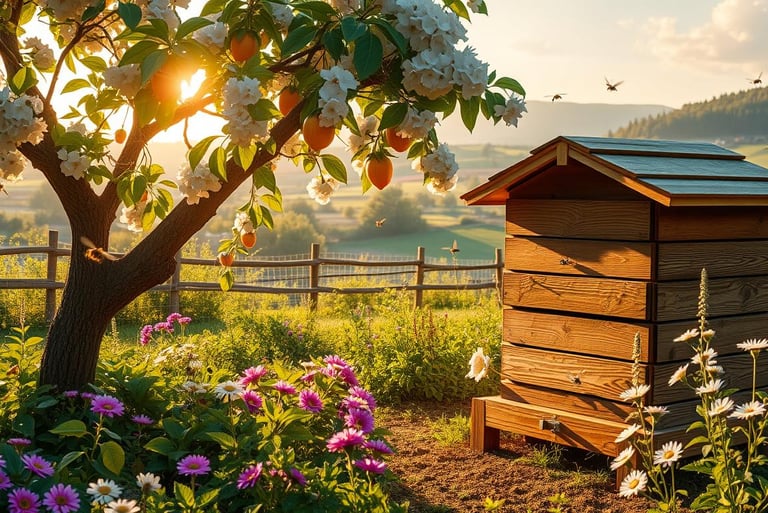

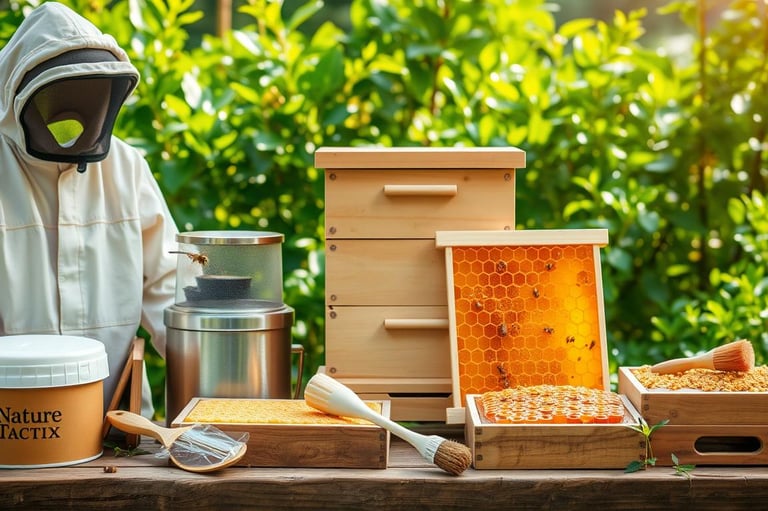


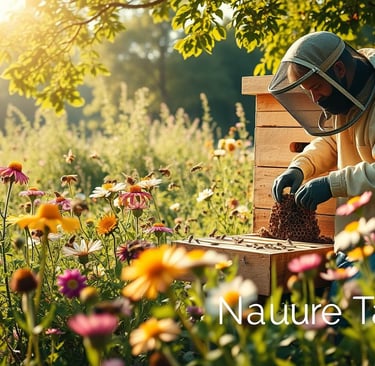
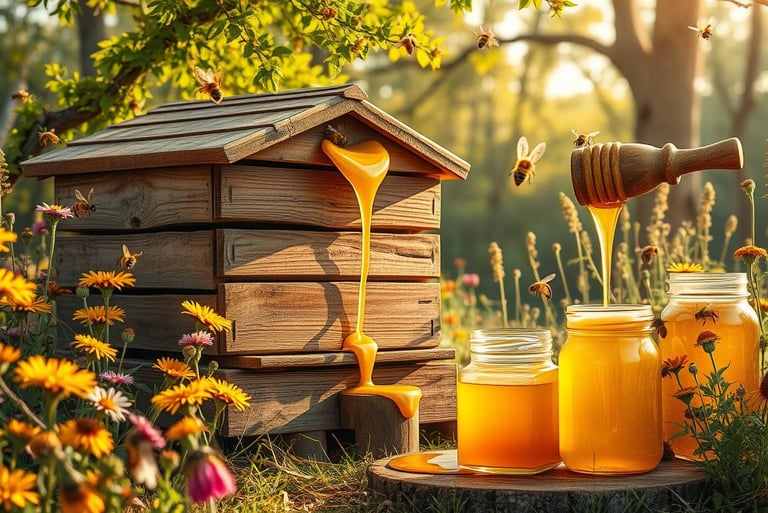

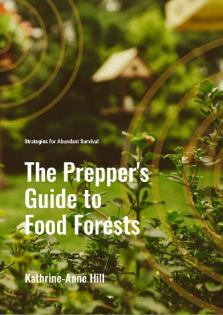

The Prepper's Guide to Food Forests: Strategies for Abundant Survival is a concise, step-by-step guide to creating a self-sustaining food forest. Ideal for preppers, it covers essential topics like design, plant selection, permaculture, companion planting, and wildlife integration. Learn how to maintain your forest, boost yields, and make it part of your survival strategy.
Highlights:
Basics of food forests and their benefits
Designing and selecting resilient plants
Creating a self-sustaining ecosystem
Using permaculture and companion planting
Maintenance, harvesting, and wildlife habitats
Food forests as part of a prepper strategy
Perfect for anyone seeking long-term food security.
Sign-Up and receive my FREE eBook The Prepper's Guide to Food Forests: Strategies for Abundant Survival !
As always, be sure to check our website for more wilderness tips and gear updates!
